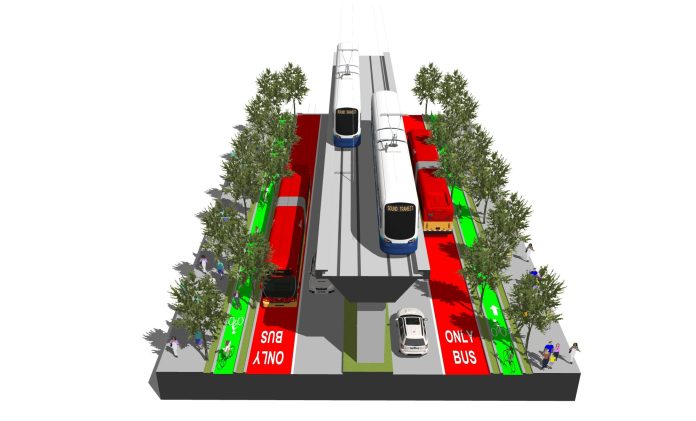
Light rail on Aurora Avenue just seems like a great idea, and Seattle Subway has the pictures to prove it. Today, the all-volunteer-run organization released those images with a press release that continued to promote their idea to run another transit measure in 2024 to build upon Sound Transit 3 additions.
“Each day 32,500 passengers ride buses on the Aurora corridor including the E Line, the busiest bus in Washington. The E Line serves four urban villages north of downtown that have recently been upzoned for even higher density, meaning that Aurora will only get more clogged in the years to come,” Seattle Subway wrote in a press release. “Our city can’t afford to wait. We need to target a 2024 ballot measure to expand Link service to the north along highway 99.”
With recent Mandatory Housing Affordability rezones opening the door wide open, Seattle Subway sees the Aurora Line as an opportunity to “transform a crowded highway into a model of efficiency, carbon-reduction and economic development…”
“Link expansion along the Aurora Corridor is an incredible opportunity to deliver high quality transit where there is already booming ridership, build new transit-oriented communities, and reclaim street space for people,” Seattle Subway executive director Keith Kyle said.
One Seattle City Council candidate has already endorsed the plan–Shaun Scott is also endorsed by The Urbanist.
“Seattle has the opportunity to demonstrate real leadership by passing ST4 and making it easier or working Seattleites, students, and everyday people to get to and from work,” said Shaun Scott, who is running for Seattle city council in District 4. “I am committed to rezoning for greater social housing options near light rail stations, free public transit, and recognize that high-quality rapid transit is both a progressive and pragmatic solution to the climate crisis. In the coming years, I look forward to seeing light rail serve communities with high rates of displaced residents in the north and south end of the Puget Sound region.”
Seattle Subway has multiple renderings, including one that pairs protected bike lanes with elevated rail along the median, dropping the existing business access and transit (BAT) lanes. “Grade-separated transit will allow for fewer lanes and create opportunities to build separated bike lanes, safer sidewalks, and to plant trees,” Seattle Subway wrote.
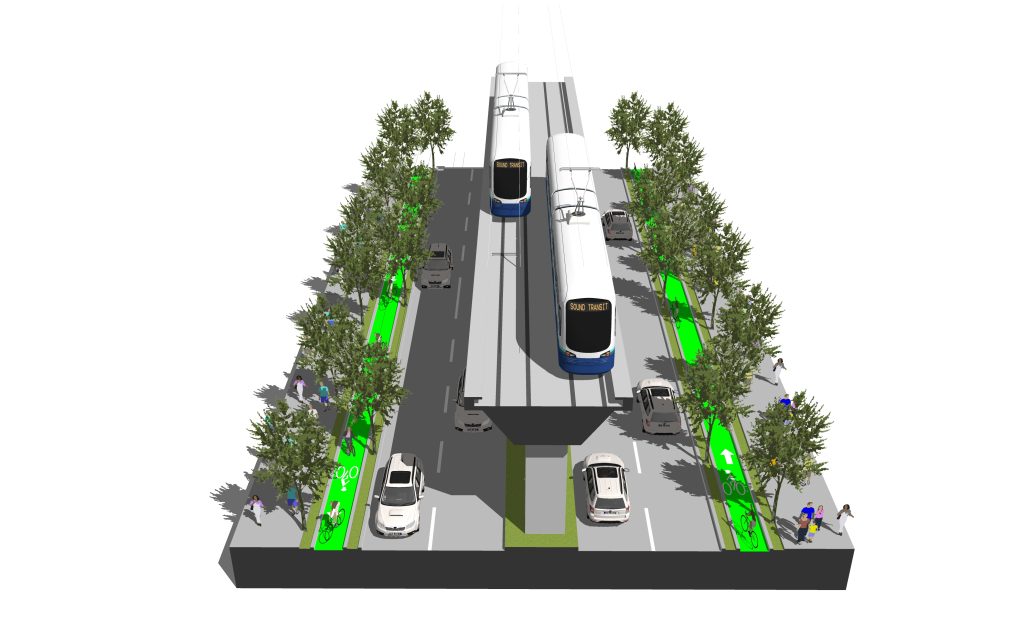
A version without trees keeps the two general purpose lanes and a bus lane in each direction, but shows widened sidewalks–a welcome addition on a busy highway that lacks them in some spots.
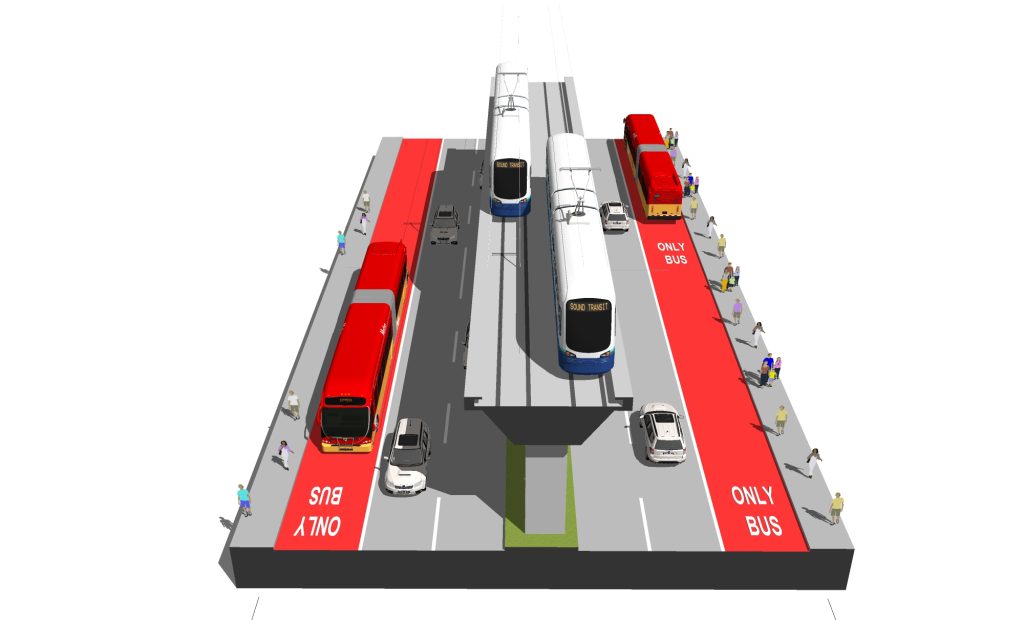
Aurora Licton-Springs Urban Village resident Ryan DiRaimo assisted with the rendering and for years has advocated for taming the highway bisecting his neighborhood. The existing road design is clearly dangerous, as an op-ed by Lee Bruch demonstrated, and re-configuring lanes could help reduce conflict points. Seattle’s stretch of Aurora Avenue north of N 59th St has averaged 343 crashes, 197 injuries, and at least one death per year over the last decade.
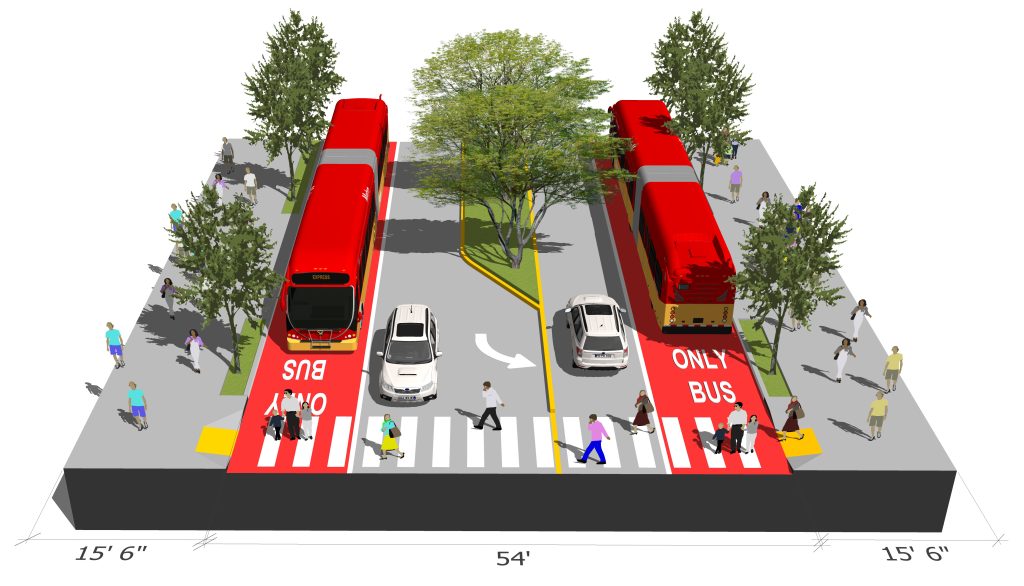
As Seattle Subway and The Urbanist have pushed for the Aurora Line, elevated rail has worked its way into renderings imagining the busy street’s future. An Aurora Avenue redesign with elevated rail could “turn this forgotten and neglected corridor into a vital asset for Seattle’s future,” DiRaimo said.
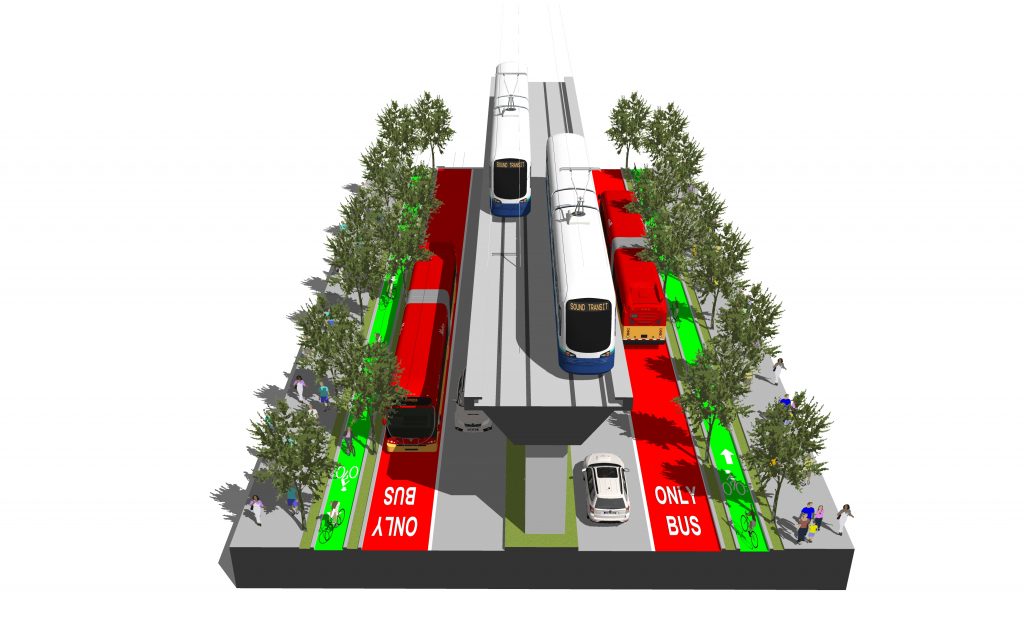
Recently, King County Metro’s steady transit ridership growth has flattened as bus reliability has taken a hit due to worsening congestion tied to post-viaduct changes and a lack of sufficient bus lanes, priority, and enforcement. Even with an overbudget $4 billion megatunnel project, the Washington State Department of Transportation failed to design effective bus-only lanes into its SR-99 design. More needs to be done to make sure transit ridership growth recovers and transit riders aren’t languishing in traffic. Grade-seperated rail would end that worry once and for all.
“Aurora already has most ingredients in place for success but is missing a plan to elevate transit from high performing to the primary way to get around for most people,” Seattle Subway said in a Seattle Transit Blog op-ed. It could also help remake the Aurora corridor with greener and denser land use including tons more housing for all income levels.
“Massive big box store lots can be transformed into transit-oriented development, including low-income housing and green spaces,” Seattle Subway stated. “Rail expansion offers a proven model to reduce carbon emissions and build safer, healthier communities while creating tremendous opportunities for economic growth.”
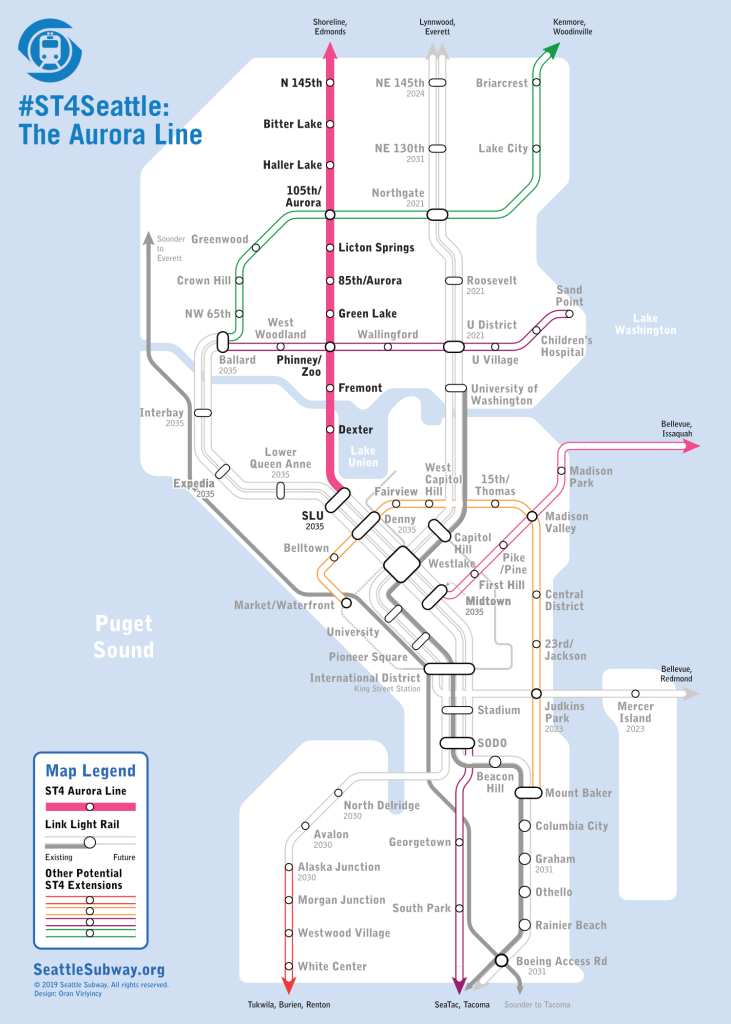
Seattle Subway’s map suggests fairly limited stops with nine stations spread across North Seattle and one stop south of the canal before reaching South Lake Union station. The RapidRide E Line would likely continue to fill in the gaps and feed the light rail stations and hence the bus lanes continue to exist in most of the renderings.
“Seattle Subway, our supporters, and our partners are calling and writing our state representatives to leverage existing funding sources and develop new sources for rail expansion,” the press release concluded. “We invite you to join the ST4 movement by clicking this link and writing to your representatives.”
Doug Trumm is publisher of The Urbanist. An Urbanist writer since 2015, he dreams of pedestrian streets, bus lanes, and a mass-timber building spree to end our housing crisis. He graduated from the Evans School of Public Policy and Governance at the University of Washington in 2019. He lives in Seattle's Fremont neighborhood and loves to explore the city by foot and by bike.

